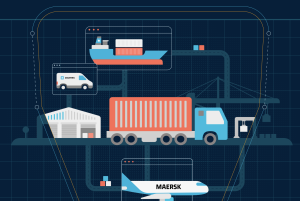All too often companies have no idea of the value of spares in their stores. This problem lies not only with small businesses; some of the largest companies in South Africa have little idea of the value and content of their stores, as the stores stock has been built up over a number of years. The reality is that the internal customer has a requirement to keep their business running, and tends to concentrate on ensuring business continuity, as opposed to reducing cost of holding spares, Craig Webber of Volition Consulting Services tells SmartProcurement.
Maintenance, repairs and operations (MRO) spares can, and generally do, amount to an extensive cost to a company. More often than not, there are spares sitting on a shelf which may not have been used in years, if ever. This may be due to a number of reasons, says Webber:
1. Spares are obsolete as the equipment for which they were bought has been replaced, or newer spares designs are in place.
2. Spares have been damaged in-store.
3. Excessive stock-holding, where the stores controller does not know or understand their minimum stock requirements.
4. Spares have been incorrectly captured or misallocated and thus are not accounted for on the system or records.
How can Stores reduce MRO Spares?
The first step to reduce your MRO spares holding is to ensure that the description of the spares adheres to a strict naming convention. There are international naming conventions, and a company should make use of one of these if its current descriptions do not create the correct behaviour. The stores controller, receiving goods into the store, needs to ensure that items are captured according to these naming conventions, he advises.
Secondly, the company should determine what actually is available in the stores, and the value of its spares. Often the only way to determine what is in the store is to visibly examine items on the shelf. However this process needs to be carried out by someone with a knowledge and understanding of these spares. This process is time consuming and is often neglected or postponed indefinitely owed to other more pressing issues. The stores controller needs to know his or her product in order to understand the internal customer’s needs.
Thirdly, “Maverick” and “Direct-to-Plant” buying should be kept to a minimum.
Once a company has an understanding of its spares, listed on an accurate database, they can consider reducing stock-holding by:
1. Determining minimum spare requirements and reducing their spares accordingly. The store controller needs to know the availability and delivery time on their spares. If an item is readily available and can be delivered within a reasonable time, consider reducing the number of items on the shelf.
2. Selling redundant spares.
3. Scrapping redundant spares which have no market value. Unfortunately there is a resistance to write-off stock. However, it is better to write-off obsolete stock rather than continue showing it as an asset on the balance sheet. There is generally a scrap value on redundant spares. The value of spares to be scrapped will often be far below the original purchase price of the product; however, most companies depreciate spares over time. The value of the spares may already have been written off.
4. Confirm that the internal customer does not have stock holding facilities of their own, resulting in the stores holding unnecessary stock.
What else can be done to improve the management of MRO stock?
1. Put contracts in place:
It is time-consuming for the buyer to constantly request quotations on low-value, high turn-over items. Putting contracts in place will free up the buyers, allowing them to manage more critical / expensive commodities.
2. Prioritize the importance of the part:
The stores controller needs to have an understanding of the internal customer, who cannot afford to have equipment fail owed to a spare not being available. The stores controller, in consultation with the internal customer, should determine:
• Spares lead time, or the time it will take to deliver the item in question.
• Consequences if the spare is not available within a relatively short time. Will the plant continue to function with a minimal hiccup or are the spares critical to the business?
Work with the supplier, to determine how soon a particular spare will be available either by courier or for collection.
3. Plan regular maintenance:
Planned maintenance will assist stores in ensuring that spares are delivered on time and according to the internal customer’s requirements.
4. Demand planning:
Technology is available to manage demand planning on behalf of a company.
5. Consignment spares:
Consider the option of your supplier providing consignment stock, where the supplier provides spares to the company, but only charges the company when the spares have been drawn from stores.
In order for stores to add effective commercial value to the company, the opportunity to reduce costs must be taken, by tightening control. This will help to increase efficiency and manage costs as a whole rather than focusing on only providing customer service.
For more information on Stores Optimisation contact Craig Webber from Volition at cwebber@volition.co.za.


























